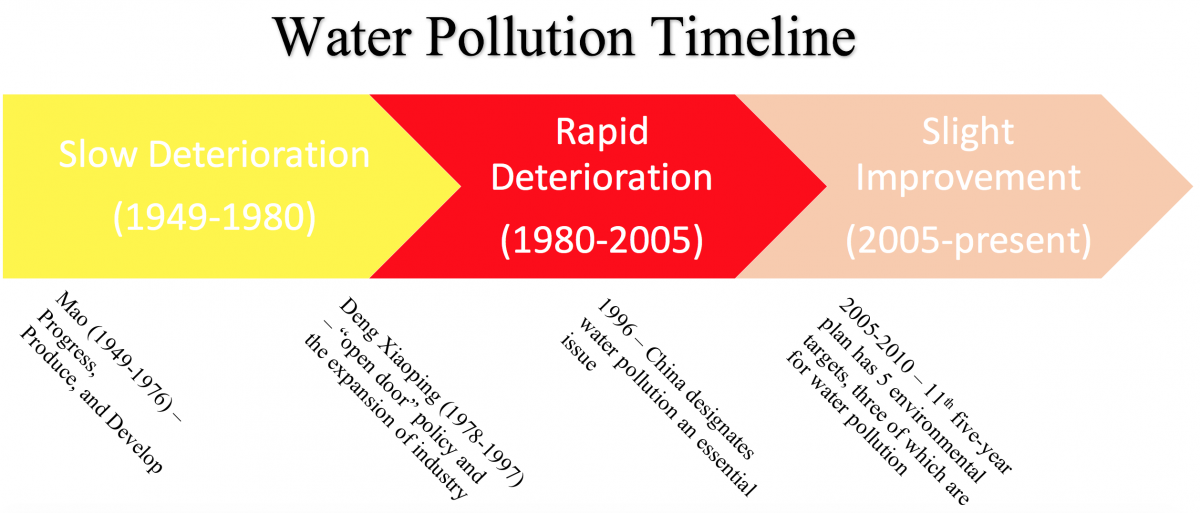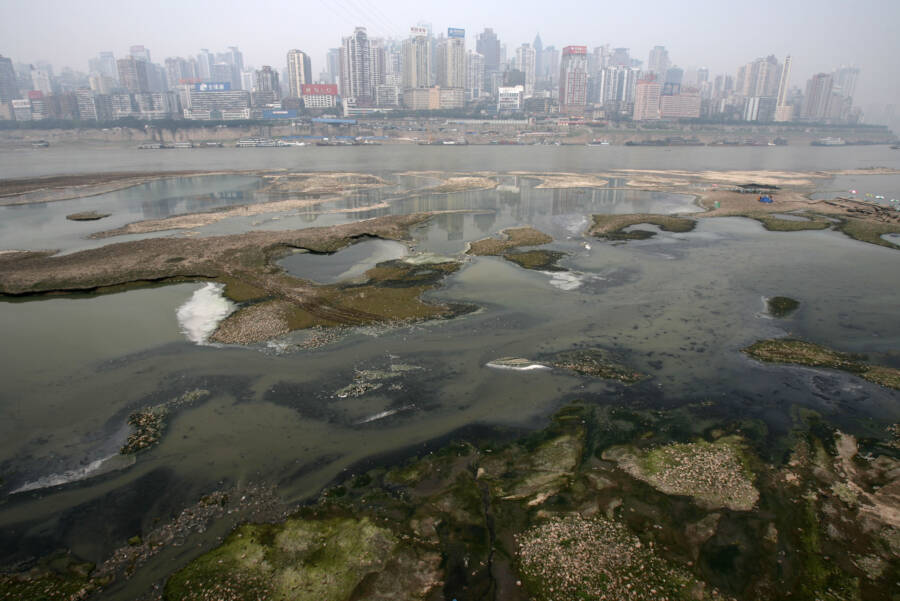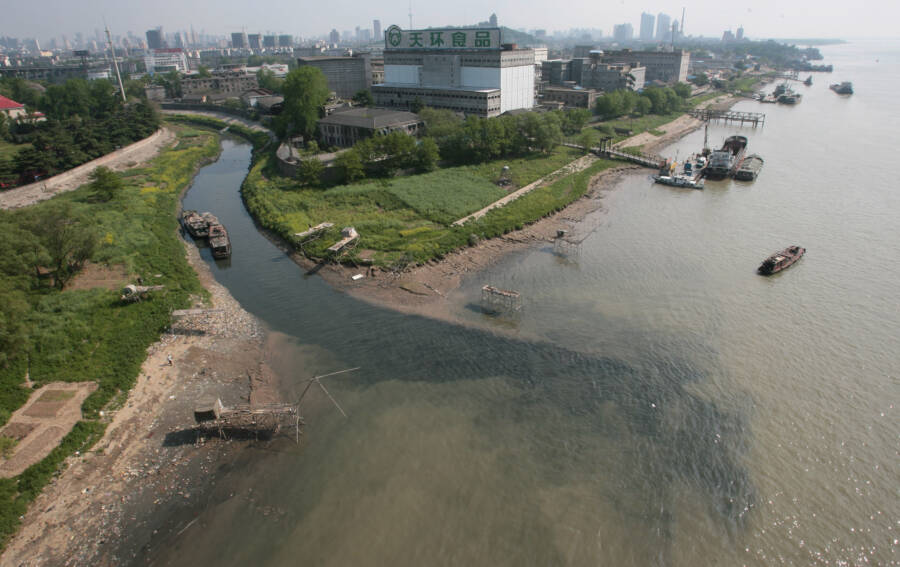- Water scarcity
- Water pollution
- Flood management
-

Causes and Effects
Water pollution develops when water is defiled by different factors. Industrial and agricultural wastes are the most common factors. These factors cause imbalance in the water leading to death of some species. Water pollution in China is such an issue, to the point that the World Bank cautioned of “catastrophic consequences for the future generation."(Facts and Details). According to the World Bank, two third of China 's population use water contaminated by human and industrial wastes and half of them use Hazardous drinking water (Facts and Details). Water pollution in China started in the 1950s and has become worse since the 1970s. Rivers, lakes, oceans and groundwater are all polluted to different extents. Water pollution in China reduces the unadulterated water source, destroy the natural beauty, expanding the wellbeing issues and eventually crumple the economic system to create the living conditions more miserable.

Half of China's 20,000 chemical factories are distributed along the Yangtze.
Policy Initiatives
Deng Xiaoping’s “Open Door Policy” in the late 1970’s ended China’s period of isolationism and allowed the influence of foreigners to expedite industrialization in China. Rapid deterioration of water quality resultant from the increased industrialization led China to take policy action.
China has some of the most stringent environmental protection laws but there are concerns with policy implementation, enforcement, and compliance in rural industrial areas (Wang, Webber, Finlayson & Barnett, 2008, p. 648). The continued pollution is therefore not entirely the fault of lacking policies.
According to the United Nations Environmental Programme, “ever since 1996, China has designated water pollution prevention as the essential work of environmental protection of the entire country” (UNEP).
This prioritization of water quality concerns has led to several new policies:
- Water Pollution Prevention Law
- Measure of the Implementation of Water Pollution Prevention
- New State Environmental Protection Agency (SEPA) water protection standards – Standards of Ground Quality, Comprehensive Standards of Sewage Discharge, Standards of Ambient Surface Water Quality
On March 4, 2014, Chinese Premier Li Keqiang declared that China would wage war against the smog. By 2017, he asserted, the government planned to convert homes in major cities from coal-burning heat to natural gas in a bid to reduce carbon emissions.
But roughly four decades of booming economic growth has turned China into the world's biggest carbon offender. The government has been trying to eliminate this pollution without damaging its economy.
The Yangtze River Pollution

Polluted water flows into the Yangtze River from a stream in Nanjing.
Just ten rivers worldwide account for providing 90 percent of the plastic that winds up in the oceans. The Yangtze was reported at one point to be the worst of them, transporting up to 1.5 million metric tons of plastic into the Pacific. In contrast, the Thames carries about 18 tons of plastic.

The Yangtze's rate of pollution is perhaps matched by Indonesia's Citarum River, whose dense pollutants are contained to a smaller area and whose fish population has dropped off nearly 60 percent since 2008.
The Yangtze is vast; fed by roughly 700 tributaries. All of these contribute to the overall level of pollution that eventually bleeds into the Pacific Ocean. This particular travel pattern of pollutants forms what's called the Great Pacific Garbage Patch, (GPGP) or the Pacific trash vortex.
Annually, the Yangtze transports 2.5 billion metric tons of goods, making it also the busiest inland river in the world. China's highly-consumerist lifestyle means its waste management system can't keep up with all the single-use plastics it produces and so these products wind up in the waterways. It's pretty much the same story the world over but if things continue at the current pace, then by 2050, the number of plastics in the ocean will outweigh the amount of fish.
In addition to the pollution of plastics, the Three Gorges Dam — the world's largest hydroelectric dam — has been damaging the Yangtze since it opened in 2003. Even before it was built the Chinese government ignored warnings that the proposed dam would become an environmental nightmare that would trigger landslides and potentially damage entire ecosystems. They built it anyway.
Even though the dam lightened the area's output of carbon dioxide, it contributed to close to hundreds of landslides in 2009 and 2010. This is in part because the dam sits on a seismic fault. At current levels, 80 percent of the land in the area is experiencing erosion, depositing about 40 million tons of sediment into the Yangtze annually, which is bad for water quality.